Synthetic vs. Wooden Flooring for Badminton Court Construction: A Complete Guide

Badminton is a high-intensity sport that demands a durable, safe, and high-performance court surface. The two most commonly used flooring types are synthetic and wooden courts, each offering distinct advantages and drawbacks.
Choosing the right flooring is crucial for player comfort, injury prevention, and game performance. Whether you're constructing a professional badminton facility, a training center, or a recreational space, understanding the differences between synthetic and wooden flooring will help in making an informed decision.
This article explores the key differences between synthetic and wooden badminton court flooring, examining traction, durability, and shock absorption. It also covers construction considerations, cost comparison, and maintenance needs to guide informed decision-making.
Why Flooring Matters in Badminton Court Construction
A badminton court’s flooring directly impacts player movement, grip, joint safety, and overall game quality. A well-designed surface should:
Provide optimum traction for quick directional changes
Offer shock absorption to minimize injury risk
Be durable enough to withstand heavy use
Require manageable maintenance efforts
Understanding which flooring type—synthetic or wooden—is best depends on factors such as budget, climate, maintenance, and player preference.
Wooden Badminton Flooring: Classic & High-Performance
Wooden courts are the traditional choice for professional badminton tournaments. Most international competitions, including the BWF (Badminton World Federation) events, are played on wooden courts with a synthetic mat overlay.
Advantages of Wooden Flooring
✔ Superior Shock Absorption – Wooden floors, especially sprung wooden floors, reduce strain on players’ knees and ankles.
✔ Aesthetic Appeal – A polished wooden surface provides a premium, professional look.
✔ Natural Bounce & Response – Wooden surfaces mimic natural playing conditions, offering consistent shuttle bounce.
✔ Longevity – When well-maintained, wooden floors can last decades.
Best Suited For
✔ Professional tournaments
✔ Dedicated badminton clubs & training academies
✔ Indoor stadiums with climate-controlled conditions
Wooden Flooring: Best for Indoor Badminton Court Construction
Wooden badminton courts are ideal for indoor badminton court construction, where climate control is maintained. Since wood is sensitive to moisture and temperature changes, it performs best in air-conditioned stadiums, professional training centers, and indoor badminton clubs. The polished wooden surface provides a premium feel and excellent shock absorption, reducing strain on players’ joints. However, exposure to high humidity or water can lead to warping and damage, making wooden flooring less suitable for outdoor or semi-open spaces.
Synthetic Badminton Flooring: Modern & Low-Maintenance
Synthetic flooring (PVC, polyurethane, or acrylic) is gaining popularity in modern badminton court construction due to its cost-effectiveness and easy upkeep.
Advantages of Synthetic Flooring
✔ Excellent Grip & Traction – Ensures better player movement and safety.
✔ Durability – Resistant to moisture, termites, and wear & tear.
✔ Low Maintenance – Requires only routine cleaning.
✔ Customizable Thickness & Cushioning – Available in various thicknesses to suit amateur and professional play.
✔ Weather-Resistant – Suitable for high-humidity regions where wooden flooring may be at risk.
Best Suited For
✔ Multipurpose sports halls
✔ School and college courts
✔ Recreational badminton centers
Badminton Court Construction: Key Considerations and Dimensions
Whether choosing wooden or synthetic flooring, badminton court construction involves several critical factors:
1. Space & Layout Planning
A standard badminton court measures 13.4m x 6.1m (44 ft x 20 ft), providing the necessary playing area. Ensuring an adequate ceiling height of 30 ft is crucial for accommodating overhead shots and maintaining optimal gameplay conditions.
2. Surface Preparation
Wooden courts require a strong subfloor with proper moisture-proofing to prevent warping and ensure durability. Synthetic courts need a smooth, even surface—typically concrete or asphalt—before installation to maintain consistent playability.
3. Line Markings & Accessories
All court markings must adhere to BWF guidelines to ensure compliance with international standards. Additional elements such as net posts, lighting, and ventilation significantly impact the overall play quality and player experience.
Which Flooring is Best for Your Badminton Court Construction?
Choosing between synthetic and wooden badminton court flooring construction depends on:
Budget: If you have a higher budget, go for wooden flooring. For a cost-effective solution, choose synthetic courts.
Usage Frequency: High-traffic courts (schools, community centers) benefit from synthetic due to durability.
Professional vs. Recreational Play: Wooden courts are preferred for elite-level badminton, while synthetic suits casual play.
Climate Conditions: Humid areas favor synthetic flooring to avoid wood warping issues.
Build Your Dream Badminton Court with Michezo Sports
Both synthetic and wooden flooring have distinct advantages. Your final choice should align with budget, performance expectations, and long-term maintenance considerations.
For expert advice on badminton court construction, flooring selection, and installation, Michezo Sports offers comprehensive sports infrastructure solutions. Our expertise ensures:
✔ High-quality badminton court surfaces
✔ Professional installation by skilled engineers
✔ Cost-effective solutions tailored to your needs




